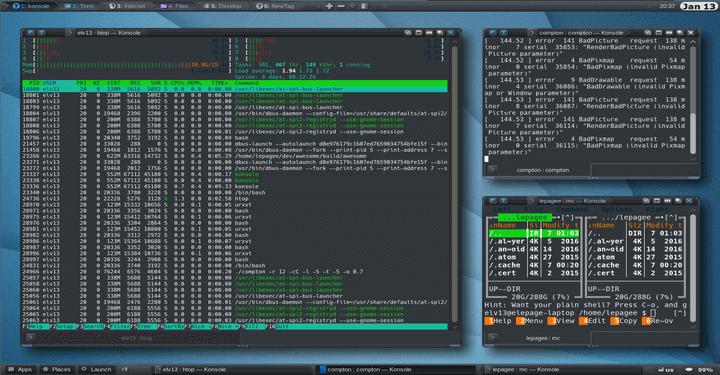
I had done that (from above, long back ) What I'd suggest you do is, run gnome-settings-daemon, nm-applet, gnome-power-manager etcetra on login. You can put them into a file and called it like "start.sh" and call every time you login or you can put it in. gnome-power-manager : required if you are on a portable computer to lower your brightness, etc.For wifi, I have seen people move to wicd and it seems to be great too. Issue here is that it doesnt get access to the gnome-keyring. nm-applet : The network manager, reqd when you use wifi.gnome-settings-daemon : For window decorations and stuff.Start working your way up by knowing what all from gnome you require. In a tiled layout, windows are managed in a master and stacking area. Any layout can be applied dynamically, optimizing the environment for the application in use and the task currently being performed. What I mean is that when you'll login with awesome, you'll get bare minimum things. It manages windows in different layouts, like floating or tiled. Basically, once you start using the awesome window manager, you'll start customizing things, and for that bottom approach is advisable (as a fellow user, what draws you to this wm is its sense of minimalism and simplicity). I am sure that you must be getting awesome as a session option while logging in. The second command sets sets awesome as the window manager dislodging compiz/metacity. It disables the desktop (the desktop you see with the icons is a special nautilus window, it disables that).

Gconftool-2 -type string -set /desktop/gnome/session/required_components/windowmanager awesomeĪssuming that you are on Gnome2, the above snippet should get you rolling. # Still disable the buggy Nautilus desktop thing

Excerpts: gconftool-2 -type bool -set /apps/nautilus/preferences/show_desktop False


 0 kommentar(er)
0 kommentar(er)
